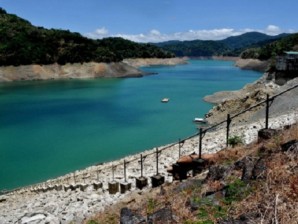Angat water level drops
MANILA, Philippines—The water level of Angat Dam dropped further to 180.85 meters on Friday morning, less than a meter short of the critical level, but the weather bureau said it was unlikely to breach the record of the 2010 El Niño season when the elevation fell to less than 160 meters.
The Philippine Atmospheric, Geophysical and Astronomical Services Administration (Pagasa) said the water level in Angat, the Bulacan reservoir supplying most of Metro Manila’s water needs, would most likely reach the critical level over the weekend.
“We expect that it will reach the critical level in two to three days,” said Pagasa hydrologist Richard Orendain.
Some of the water in Angat Dam flows to Ipo Dam and then to La Mesa Dam in Quezon City, which provides 97 percent of Metro Manila’s water requirements, while the rest flows to Bustos Dam in Bulacan, which irrigates farmlands in Bulacan and Pampanga.
During this process, the water passes through the turbines of hydroelectric plants for power generation.
But once the critical level of 180 meters is reached, the supply to Bustos Dam is immediately cut off and diverted to Ipo Dam, although it is still passes through the power turbines, Orendain said.
He added, however, there was little possibility that the water level would go down to the lowest it ever reached in July 2010, when the water receded to 157.56 meters.
“If we compare where we were in 2010, and where we are now in 2014, we still have a much bigger volume of water than in 2010,” Orendain said.
On May 9, 2010, the water level was already at 174 meters, lower by six meters than this year, he noted.
“Six meters of water elevation is a large volume of water, and we still expect rains to come in June to July in spite of El Niño,” Orendain said.
He said El Niño would peak in October and November; thus, rains, even though below average, were still expected in June to July.
“Historically, the water level in Angat Dam always rises during the onset of the rainy season in June or July, except for some years when it was delayed to August,” he said.
Pagasa expects El Niño, a phenomenon marked by the warming of eastern and central Pacific waters, to affect the country in June, resulting in lower than average rainfall and stronger tropical cyclones.
Orendain said there was no reason to be alarmed by the receding water level in Angat Dam, but he advised residents of Metro Manila to conserve water.
RELATED STORIES
Metro Manila water supply from Angat Dam reduced
